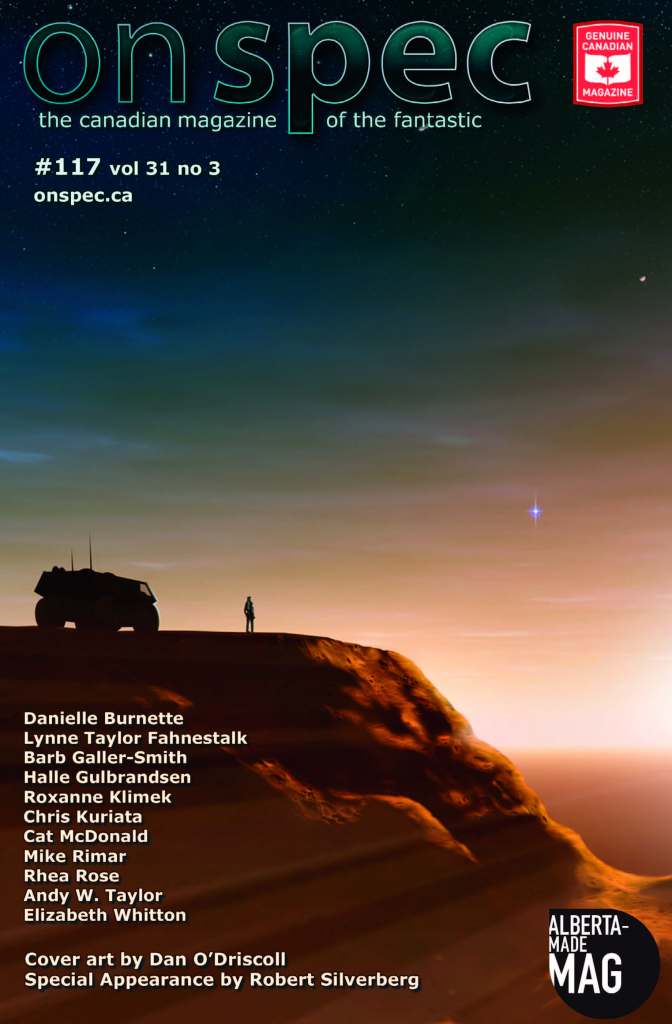Modern Myth and Meaning is a blog series on the contributions of literature and pop culture to contemporary mythology. It investigates how themes represented in science fiction and fantasy intersect with layers of American consciousness, exploring the meanings of those connections.
My name is Erin Wilcox, and one of the hats I wear is a turban. I’ve been teaching Kundalini Yoga for eight years, practicing yoga for many more. My favorite fandoms include Star Trek, Star Wars, and Lord of the Rings (which, I feel like, describes most of us). So I was super excited to be leafing through some meditations in a yoga book one day and come upon the Vulcan salute. Squee, I thought. My passions unite. Of course, I tried out the meditation.
Next thing I knew I was at Worldcon 76 teaching a yoga class that delved into the meaning of the Vulcan salute, or Mr. Spock’s mudra, as I like to call it. (A mudra is a hand position designed to produce a particular effect in yoga.) The class, titled Live Long and Prosper, attracted an eclectic group including a couple of yogin in Starfleet uniform. We had such a great time, I thought I’d share my research on the mudra here.
Nimoy described at least two different inspirations for Mr. Spock’s mudra. In a 1968 New York Times interview, he said that this gesture was “a double-fingered version of Churchill’s victory sign.”1 Churchill used what most Americans know as the peace sign as a rallying symbol for Allied Powers in World War II.
In an interview with Christa Whitney of the Yiddish Book Center, Nimoy said he got the idea for the Vulcan salute from a childhood visit to an Orthodox synagogue, where he saw a Kohanim, or member of the priestly class, use the hand gesture as part of a blessing. The congregation was instructed to look away from the bimah, but young Nimoy peeked. According to him, the hand position may have represented the letter shin. The gesture may have additional meanings within the context of the prayer in which the Kohanim use it.
If this is a Judaic symbol, then why would it show up in a Hindu-based practice such as yoga? Is there a historical connection here, or just coincidence? Trade and cultural communication did exist between the Middle East and the Indian subcontinent at least as far back as 1,000 BCE. Scholars have found other similarities, linguistic and traditional, between Hinduism and Judaismi. Therefore, it’s not a huge surprise to see it appear in the yogic tradition, and a historical connection is quite possible. As to which tradition discovered it first, I want no part in that argument, thank you kindly.
To understand what the mudra does from a yogic point of view, it helps to take a step back and look at what mudras do. Mudras relate to the brain, affecting our neurons. Ancient yogin figured out that with all the nerve endings we have in our hands to pick up sensory input from the world outside, we can reverse engineer that equation and do things with our hands to affect our brains. The right hand affects the left hemisphere of the brain and vice versa.
The Vulcan salute is a mudra that, combined with the specific breath and body position of the meditation I taught at Worldcon 76, gives us control over both hemispheres of the brain. Why would I want that? you might ask. Well, when we stick to living on instinct, life becomes a series of knee-jerk reactions, also known as karma. Yoga practice in general and this meditation specifically give us the opportunity to slow down, breathe, and make better decisions, ideally ones that line up with who we are and what we believe in. That’s the kind of “control” we’re talking about. With more space between our knee-jerk instincts and our actual decisions, we can get out of our karmic cycles.
 An important facet of this mudra, therefore, is the creation of space. Anatomically, the Vulcan salute creates space between the ulnar, median, and radial nerves. Symbolically, you create space between the middle finger, associated with Saturn (the task master, ruler of karma, responsibility, courage, duty) and the ring finger, associated with the Sun (ruler of projective energy, healing, sexual health, and vitality).
An important facet of this mudra, therefore, is the creation of space. Anatomically, the Vulcan salute creates space between the ulnar, median, and radial nerves. Symbolically, you create space between the middle finger, associated with Saturn (the task master, ruler of karma, responsibility, courage, duty) and the ring finger, associated with the Sun (ruler of projective energy, healing, sexual health, and vitality).
You also create space between the pointer finger, associated with Jupiter (ruling expansion, knowledge, and wisdom) and the thumb (representing the Ego).
The opening of these spaces also unites two pairs of fingers, generally along nerve pathways. Jupiter and Saturn (pointer and middle fingers) unite the median nerve. The Sun and Mercury (ring and pinkie fingers) unite the ulnar. The Ego (or thumb) connects mostly to the radial nerve. All of these nerves cross into other fingers somewhat, but these are the major emphases.

The Vulcan salute, therefore, cultivates strength and unity through the nerve pathways while creating space between karma & vitality, ego & wisdom. It can be used in combination with different breath patterns and body positions for varied effects.
1 Diehl, Digby (1968-08-25). “Girls All Want To Touch The Ears”. The New York Times. p. 173. Retrieved 27 February 2015.
i https://en.wikipedia.org/wiki/Hinduism_and_Judaism#cite_note-22
(Featured image: By NASA Astronaut, Terry W. Virts – nasa.gov, archived link., Public Domain, https://commons.wikimedia.org/w/index.php?curid=38656911)











Cool Erin! Nice nexus found here. All is connected.
This is a thought-provoking blog post, Erin. Thank you and I hope to see more from you.
Vulcan anatomy is fictional, of course, so science fiction writers are free to assign any significance we like to whatever is going on in their bodies. But might the Vulcan salute have some usefulness to humans?
Your analysis made me realize that the Vulcan salute is performed with the wrist in the neutral position, and it gently spreads the carpal bones, relieving pressure on the median nerve. In humans this might be a useful therapeutic exercise to alleviate symptoms carpal tunnel syndrome. The idea has not been tested but it is (dare I say it?) logical.
Very interesting! Thanks for sharing!
I am not surprised that something used in one culture may have its roots in another. Take the churro for example which originally was inspired by the Chinese fried bread. Or Italian pasta. Did Marco Polo bring this back to Italy?
Like you I do not wish to get involved in which came first.
Thanks!
Cool! It’s always good to remember that ancient cultures interacted with each other, so it’s possible the the two are related. Cross-cultural interaction is nothing new!
This is fascinating!!!
Fascinating research! Thank you for coming up with an entertaining and enlightening examination of this intersection of pop culture and historical tradition
I’m not a Trekkie, but I’m definitely a geek for this kind of thing. Fascinating. Thanks for this fun investigation!
Thanks, Erin, for this informative post. I didn’t know about the potential roots of the salute, but it certainly struck a chord with the original audience for the show in the mid 60s. I especially like your comments about the neuronal effect–anything that helps us resist our initial spontaneous response in favor of a more considered, reasoned one is okay by me!
So glad you enjoyed it! In the interview, Nimoy talks about the magic of the blessing and how the Vulcan salute “touched the magic core.” It does sound like it engaged people instantly in the sixties, as it still does today. Not a bad legacy!